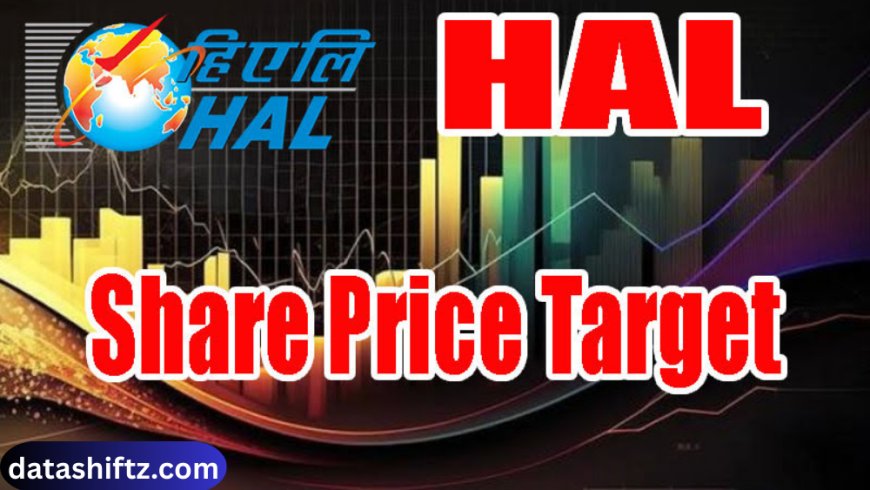HAL Share Price: Trends, Analysis, and Future Outlook for Investors

Introduction
Hindustan Aeronautics Limited (HAL) is one of India’s most prominent defense public sector undertakings (PSUs) and a critical pillar in the nation’s aerospace industry. Listed on Indian stock exchanges, HAL share price has been a strong performer in recent years, driven by India’s growing defense requirements, government push for indigenization, and HAL’s expanding order book.
This article takes a detailed look at the HAL share price, including historical performance, factors affecting stock movements, recent developments, risks, and future outlook. We will also provide comparative analysis through tables and lists to give investors a structured perspective.
About Hindustan Aeronautics Limited (HAL)
Founded in 1940, HAL is headquartered in Bengaluru and is primarily engaged in the design, development, manufacture, and maintenance of aircraft, helicopters, engines, and avionics for the Indian Air Force (IAF), Indian Navy, and other defense services.
HAL’s Key Offerings
-
Fighter aircraft and trainers
-
Helicopters and transport aircraft
-
Jet engines and avionics systems
-
Overhaul, repair, and maintenance services
-
Partnerships in defense R&D
With its monopoly in defense aircraft manufacturing in India and strategic role in “Atmanirbhar Bharat” (self-reliance in defense manufacturing), HAL’s financial and stock performance has consistently gained attention from retail and institutional investors.
Historical Performance of HAL Share Price
HAL’s stock has seen steady growth since its listing. The rise is primarily due to robust financials, strong government orders, and increasing global collaborations.
| Year | HAL Share Price (Approx.) | Key Trigger |
|---|---|---|
| 2018 | ₹600 – ₹700 | Listing and initial volatility |
| 2020 | ₹900 – ₹1,000 | Defense sector reforms, Make in India push |
| 2021 | ₹1,200 – ₹1,400 | Growing order book, strong earnings |
| 2022 | ₹2,000 – ₹2,400 | Record orders from IAF, investor confidence |
| 2023 | ₹2,800 – ₹3,100 | Strategic tie-ups, export growth |
| 2024 | ₹3,600+ | Consistent growth, strong financial results |
Factors Driving HAL Share Price
1. Government Policies
The Indian government’s focus on indigenization of defense manufacturing and reduced imports has been a major growth driver. Policies like the Defence Acquisition Procedure (DAP) and allocation of record defense budgets have boosted HAL’s growth prospects.
2. Order Book Strength
HAL has a massive order backlog, including contracts for fighter jets (Tejas), helicopters (Dhruv, Light Combat Helicopter), and other aircraft. A strong pipeline ensures revenue visibility for several years.
3. Export Opportunities
HAL is exploring international markets, with deals in Asia, Africa, and Latin America. Increased exports will diversify revenue sources and reduce dependency on Indian defense orders.
4. Financial Performance
Consistently strong earnings, healthy margins, and robust cash reserves have made HAL a blue-chip PSU stock in defense.
5. Investor Sentiment & Market Trends
Global geopolitical tensions, India’s defense modernization, and overall PSU rally in Indian markets have contributed to the rise in HAL share price.
Risks and Challenges for HAL Share Price
While HAL presents significant opportunities, investors should also be aware of potential risks:
-
Dependency on Government Orders – A large portion of revenue comes from Indian defense services.
-
Competition – Entry of private players in defense manufacturing could reduce HAL’s monopoly.
-
Execution Risks – Delays in project deliveries may affect credibility and revenue recognition.
-
Global Supply Chain Issues – Dependence on imported components may pose challenges.
-
Policy Changes – Any change in government policies on defense procurement may impact growth.
HAL Share Price: Key Financial Metrics
| Metric | FY 2022 | FY 2023 | FY 2024 (Est.) |
|---|---|---|---|
| Revenue (₹ Cr) | 24,620 | 26,900 | 29,500+ |
| Net Profit (₹ Cr) | 5,080 | 5,800 | 6,200+ |
| EPS (₹) | 151 | 170 | 182+ |
| Dividend Yield | 2.2% | 2.5% | 2.5%+ |
| Order Book (₹ Cr) | 82,000 | 83,500+ | 85,000+ |
Investor Checklist – HAL Share Price
If you’re considering investing in HAL shares, here are some key points to evaluate:
-
Track quarterly financial results.
-
Review the company’s order book strength.
-
Monitor government defense budgets.
-
Analyze geopolitical factors impacting defense sector.
-
Compare HAL with peer PSUs and private players.
-
Consider the company’s dividend policy.
-
Assess export opportunities.
-
Watch for new contracts and partnerships.
-
Evaluate valuation ratios (P/E, P/B, EV/EBITDA).
-
Align investment with your long-term portfolio goals.
Peer Comparison of HAL with Other Defense Stocks
| Company | Sector | Market Cap | P/E Ratio | Outlook |
|---|---|---|---|---|
| HAL | Aerospace & Defense | Large-cap | ~25x | Strong |
| Bharat Electronics (BEL) | Defense Electronics | Mid-cap | ~30x | Moderate-Strong |
| Mazagon Dock | Shipbuilding | Mid-cap | ~20x | Growing |
| Bharat Dynamics (BDL) | Missiles & Defense Systems | Mid-cap | ~28x | Positive |
HAL stands out due to its large-scale monopoly in aerospace and aircraft manufacturing, positioning it as a long-term growth stock.
Future Outlook for HAL Share Price
The future of HAL share price looks promising, supported by:
-
Expansion of the Tejas fighter program.
-
Growing helicopter exports.
-
Government’s record defense allocations.
-
Expansion into civil aviation components.
-
Strategic tie-ups with foreign defense companies.
If India continues its push toward self-reliance in defense manufacturing, HAL could be among the biggest beneficiaries, making it an attractive stock for long-term investors.
Conclusion
Hindustan Aeronautics Limited (HAL) has emerged as a strong performer in the Indian stock market, with its share price reflecting both the company’s robust financials and India’s defense ambitions. While the HAL share price has delivered impressive returns in recent years, investors must also evaluate risks such as government dependency and project execution challenges.
For long-term investors, HAL remains one of the most promising PSUs in the defense sector, with growth fueled by rising demand for indigenous defense capabilities and global export opportunities.





























